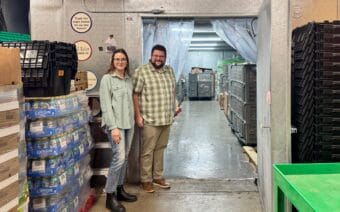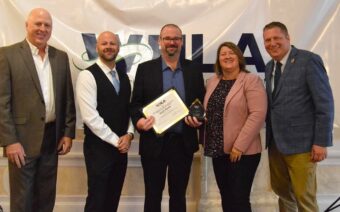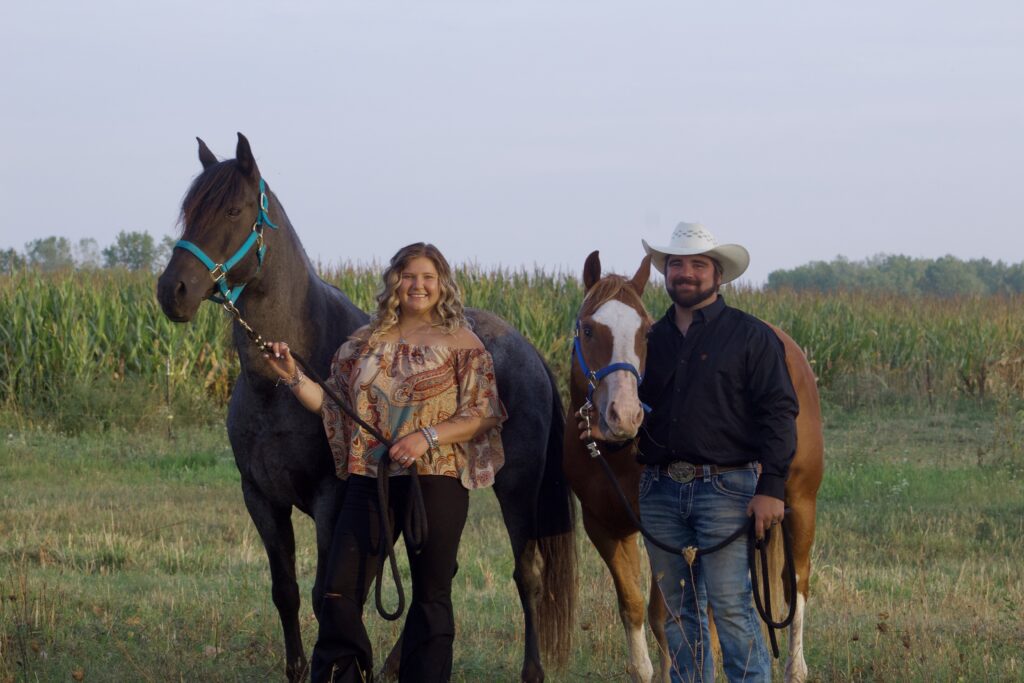
July 14, 2025
BLACK CREEK – In animals, Justine Tonn – owner of Purely Balanced Equine & Canine Therapies – said, sighs can often signify boredom, frustration or resignation.
But in her work, Tonn said the sound of a deep sigh from her clients means one thing: happy dogs and horses.
The certified equine sports massage therapist/certified canine massage therapist – who opened Purely Balanced Equine & Canine Therapies in December 2024 – said she knows when she hears a deep sigh from one of her clients, it’s a job well done.
“Their face gets very relaxed throughout a massage,” she said. “Their ears will kind of soften. Their eyes will soften. When I am doing trigger point therapy, the release that you’re looking for is a deep sigh release.”
The inspiration
Planning on becoming a veterinarian “since I was in third grade,” Tonn said she’s always had a “knack for animals.”
“I’ve always loved animals,” she said. “I never considered another career path. I was the child who brought strays home or to my grandparents’ house.”
Though she planned to become a veterinarian, Tonn said life took a slightly different turn when she met her soon-to-be husband, Brady, and they settled down to start a business and family.
Together, the couple owns and operates Tonn Enterprise, Lawn Care and Excavation from their home in Black Creek.
Through her work as a vet tech at a veterinary clinic in Menasha – where she can “still be in the vet med community – just in a different way” – Tonn said she was exposed to how beneficial massage is for animals.
“I’ve always had an interest in massage therapy,” she said. “So, I started talking with Jill and Greg Gage with Therasage in Janesville last fall. They have certification classes, which include massage, kinesiology taping, red light therapy, cold laser therapy and other advanced modalities to help relieve pain and discomfort.”
More inspiration, Tonn said, came from other vet techs she works with who train animal athletes, such as dogs that do Fast CAT courses or dock diving competitions.
“That was something that really intrigued me,” she said. “They were talking about the different kinds of therapies they provide for their animals or have found with other specialists, as far as keeping the animals’ bodies in shape as athletes.”
After completing her canine massage therapy training both online and in person through Therasage, Tonn said she then completed her equine sports massage therapy training with S.M.I.L.E.S. (Special Methods in Learning Equine Skills) in Darien.
Though at that point she wasn’t quite sure of the next steps, Tonn said she was eager to “see where this takes us.”
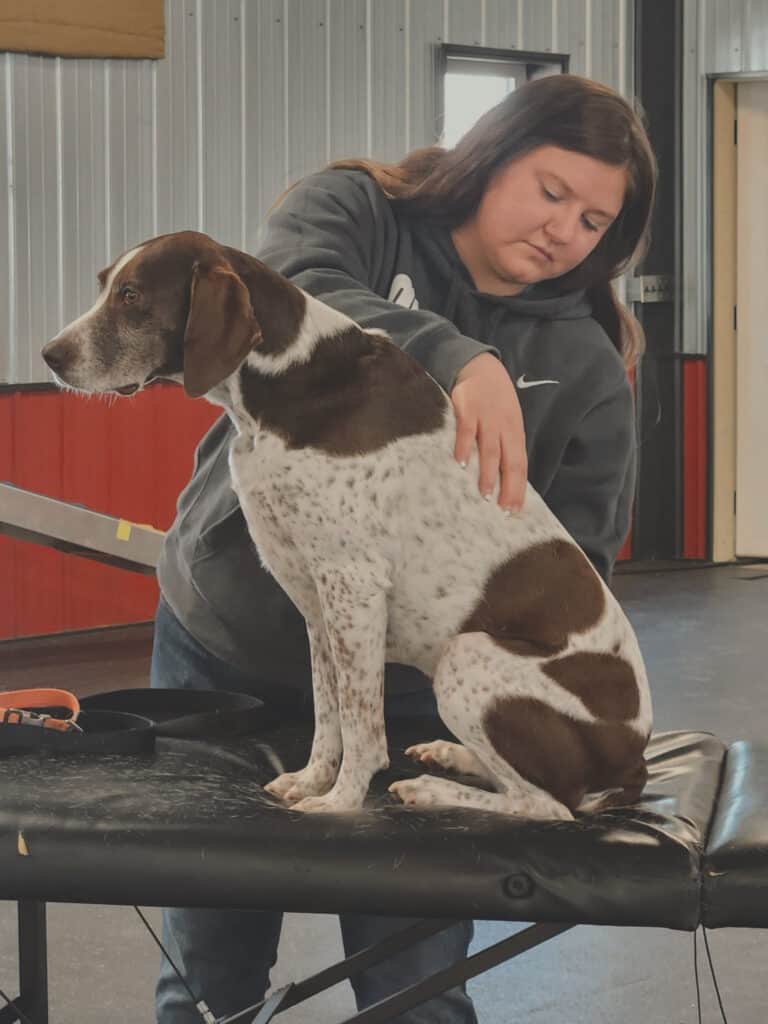
“I wasn’t sure how the business idea would pan out, but I always knew I could bring it home for my own animals,” she said.
Excitingly, Tonn said, the business has taken off with her traveling up to 100 miles every Saturday through Tuesday to deliver Purely Balanced’s services to homes and horse farms.
Purely Balanced
Similarly to people, Tonn said animals can suffer when they’re “out of balance” due to pain and mobility issues.
“The name ‘Purely Balanced’ is motivated by my wanting to purely balance my patients and give them the best health experience that I can,” she said.
Tonn said one of her clients is a horse farm with roughly 20 horses, ranging from barrel horses to endurance and show horses.
“I like to see them once every month or two, depending on how they’re doing,” she said. “Some horses, such as trail horses, can possibly go three, four months between massages. It all depends on how much stress their body is dealing with chronically.”
So, how does one know if a canine or equine friend is in pain and needs a massage?
Tonn said paying close attention is key.
“Look for any sort of range of motion issues,” she said, “such as an active dog suddenly seeming restricted when running. If they seem more strained, especially in the back end – maybe dragging their feet – there may be something wrong.”
Tonn said her hunting dog – a German shorthaired pointer named Remy, who loves to hunt – runs a lot, “so she has a lot of back pain, usually in the mid to lower back.”
“If you run your fingers down the back, you can see where she gets a little bit more tense, and that’s kind of what we’re looking for in both horses and dogs,” she said.
Typically, Tonn said she works on an animal for an hour each session.
For horses, she said she starts with something called an Equistick, which is specifically designed for equine massage.
“It’s very similar to a foam roller for a person,” she said. “I run that along the entire length of the horse, prepping those muscles, getting blood flow going. Then I start from the head all the way back to the tail – seeking different trigger points that are a little more inflamed, a little more agitated and try to break up that tightness, that knot, so that the horse is more comfortable.”
Tonn said animals have their own way of telling her where they’re hurting.
“Horses are much more expressive,” she said. “They will look at you, or they will flick their ears back and forth. If they’re uncomfortable, they get a little crabby and kind of pin their ears right back against their head. That’s how I know I’m in a sensitive area, where I have to be more gentle – understanding that the work may need to be done over two or three sessions versus one to avoid damaging fascia tissue.”
Tonn said she has several tools at her disposal to optimize the experience for the animals, understanding that the experience requires a focus on positive reinforcement.
“If you’re doing things they don’t like, the next time you come, they’re not going to want you to touch them,” she said.
Equine massage is physically demanding, so Tonn said the tools – small, handheld devices with grooves and angles that help break down tight areas – are crucial to helping her complete a session successfully.
“I try most of the time to use my fingers, because you lose a lot of your touch if you’re using other tools,” she said. “But if there’s this really big area that’s super tight, I don’t want to get fatigued, unable to finish. The tools then help me until I can go back to using my fingers.”
Tonn said horses and dogs can be especially skittish at the start of the first session, so she knows approaching them calmly and gently helps build the initial trust.
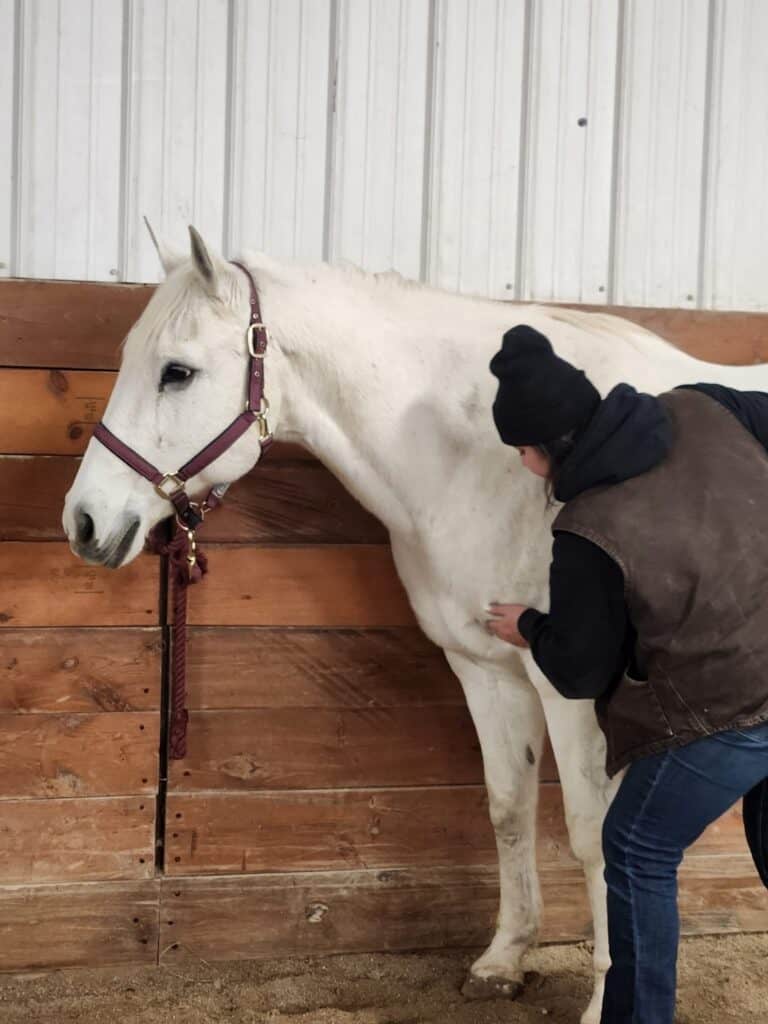
“Introducing the tools is also very important,” she said. “When I bring a new tool out, I let them see it. I let them smell it. I take a very light touch to start, so they understand that it’s not going to hurt them. That helps create a positive experience.”
Tonn said her greatest challenge thus far was found in her own backyard.
She said her husband’s horse, Rain – a 15-year-old quarter horse who came to them last year – is “very skittish, very afraid of everything from spray bottles to hoses.”
“We could not bathe her at first,” she said. “Any sound that would sound like a water bottle would really frighten her. So, we had to do a lot of rehabilitation.”
Also underweight when they got her, Tonn said they were battling, “trying to make her more trusting of humans, and trying to get weight on her and get her healthy again.”
Tonn said she would approach Rain slowly – start by showing her the tools from about four feet away.
At first, Tonn said Rain would get a bit noisy, staring her down and snorting at her.
“She will rear up if she’s afraid of whatever is there,” she said. “That’s typically why we don’t hard-tie her to anything. I don’t want her to hurt herself. I don’t want to get hurt trying to get her loose. We do everything with the rope in hand so that if something were to happen, she’s still in a very safe place.”
Tonn said Rain has “made leaps and bounds” with her comfort level.
“I am not against bribery whatsoever, so I am very treat-motivated with her,” she laughed.
Tonn said in her work with animals, she also prioritizes communicating clearly and thoroughly with the owners regarding what she’s doing and why, and what treatment plans should be considered.
She said she also describes the stretches they can do with the animals between sessions to help keep them healthy.
“I want to make sure they know that I’m not just coming there to massage their horse [or dog] and leave,” she said. “I want to make it a lasting relationship.”
Tonn said the most rewarding part of her job is knowing a session has brought relief to a hurting dog or horse.
“Horses and dogs are very in tune with their bodies,” she said. “They settle right into a massage. At one point, they might even be sleeping.”
For more information, visit Purely Balanced’s Facebook page.
 Is Oshkosh on pace to reach its housing goals?
Is Oshkosh on pace to reach its housing goals? Wisconsin Manufacturing – rising confidence, workforce challenges, AI adoption
Wisconsin Manufacturing – rising confidence, workforce challenges, AI adoption

